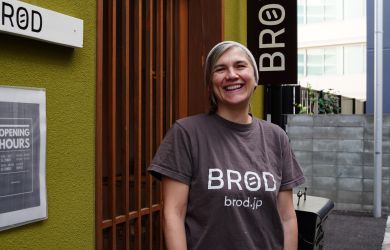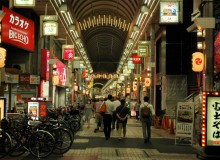
March 6, 2014
Silver Linings Prayer Book
Life will never be normal again in post-disaster Tohoku
By Metropolis
Originally published on metropolis.co.jp on March 2014
For the first time in many months, my fingers do not obey.
I type, delete, type again, delete more. Today I am the bearer of bad news. Most people I know avoid the Negative Nellies, the chronic complainers and the naysayers surrounding us for whom life is always dramatic and sad. Listening to them becomes tedious. I don’t want to be a burden, a Whiney Whitaker, a bore. I’m not writing to stir up emotion or sentiment. I write today to inform you on the status of life in Tohoku three years post-disaster—a glimpse into the lives of those around me—and today I don’t have a lot of good news to share.
I’m approaching the third year mark of my work in Rikuzentakata. This is the city wiped off the map in the tsunami that struck a few days shy of three years ago. Downtown is gone, replaced with tall weeds and a vast open view to the sea. Vases with flowers mark where homes once stood. Buildings where people met, ate, worked and gossiped are gone. Apartments and houses, homes to the bulk of the population, are reduced to concrete foundations. It’s depressing. Driving through downtown, something most residents must do on a daily basis, simply chips away at our souls. Life here sucks.
For some. For others, there is a genuine attempt to see the disaster as an opportunity: to start over, change, try new things, reinvent oneself, dream. That’s the good news. The bad news is: there is a select few to whom this applies. These people were “glass half-full” types before the disaster. While it’s a struggle to maintain optimism when very little physical improvement can be seen throughout town, these are the folks who strive to stay positive.
Then there are those who can only see the negative. I say this not to point fingers and call them whiners, but to openly state the following: trying to find the silver lining each day in post-disaster Tohoku is simply too much for some.

Rikuzentakata was a bustling city of 24,000 people pre-disaster. The population now hovers just over 20,000. Of the 4,000 who no longer live in town, just under 1,800 were lost on March 11, 2011. The rest left town.
Of the remaining 20,000, everyone lost someone. Some lost a spouse, a child, a parent, a sibling, a grandparent, an aunt or a cousin. Others lost colleagues, friends, more distant relatives and neighbors. Most people I know lost more than one person in their lives. You don’t just “move on” or “get over” this. When there is collective grief, and where there is pervasive pain, movement tends to be stagnant or even flow backwards. People are tired. Even those who initially rallied the troops with a stoic “March on!” are silent. The gap is widening between those who see the disaster as a chance to improve versus those who cannot see beyond their pain. More and more the emotional health of those in Tohoku resembles a bell curve: a few who can stay positive, a larger group of those who are seen as apathetic and simply living day-to-day and back down to those mired in the memories of life pre-disaster.
“What’s your point?” you ask.
Rightfully so. Today I neither offer advice nor will I assign blame. Enough people have offered their opinions on both. Time has moved on—but life has not. This is the ugly secret in Tohoku, the truth no one wants to discuss. Very few have anything to show for the amount of time that has passed.
I do not want to be known as Depressing Doris. I abhor the idea of preaching doom-and-gloom. Somebody, however, needs to let people know just how tough it is to get out of bed for many in post-tsunami Tohoku. Today, the region needs a kick in the pants—along with a giant bear hug. You need to know this. How you offer one or both is for another day.
On this memorial, however you choose to express your faith, I ask that you remember.
I ask that you care.
Sing. Light a candle. Say a prayer.
We’ll take the kicks and hugs later.





